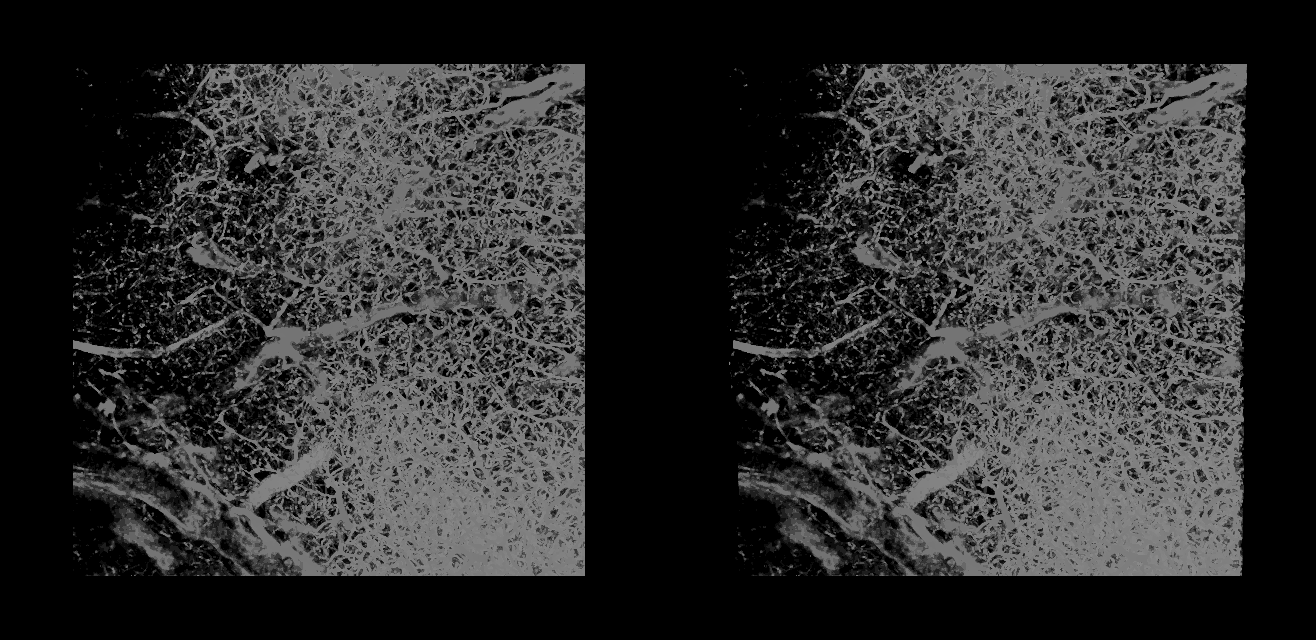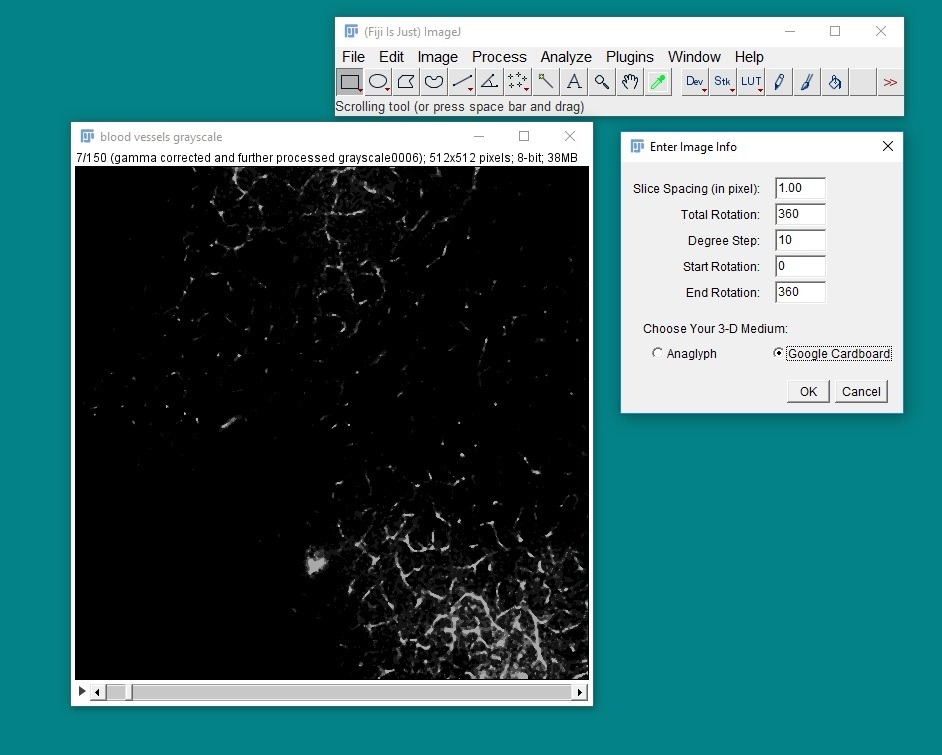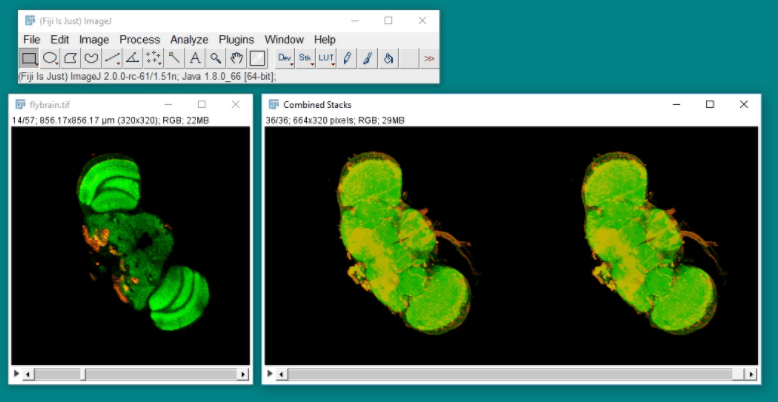Medical imaging has made remarkable leaps and bounds. In today’s world, doctors and scientists can generate rich images from a multitude of sources, such as confocal microscopes and MRI machines. With popular programs such as the open-source, powerful ImageJ editor, these images can be further enhanced and even be used to construct accurate three-dimensional models of the original sample. However, despite breakthroughs in virtual reality technology, these 3-D models and image stacks are still viewed in a two-dimensional context: through a monitor. The low usage of inexpensive VR solutions such as Google Cardboard can be attributed to the time and expertise normally required to create a VR compatible model or video clip. To allow for simple integration into VR technology, Visikol teamed up with Somerville High School student Joe Napoli to write a Stereoscopic 3D Projection plugin for ImageJ.

The Stereoscopic 3D Projection plugin provides a straightforward way to create anaglyph or Google Cardboard-compatible VR projections. Written in Java 8, this plugin takes in an image stack as input. After reading in values such as slice spacing from the image stack’s metadata, the user can dictate how many degrees the projection will rotate before generating a new frame, how many degrees the final projection will rotate, the start and stop rotation of the projection, and whether the projection is done in anaglyph or for Googe Cardboard. Here, the user can also adjust the slice spacing, if necessary. To generate these projections, the plugin utilizes ImageJ’s powerful innate 3D projection function to create projections for the left and right eyes. The right eye projection is rotated an additional five degrees, to account for the spacing between one’s eyes. If the projection is in anaglyph format, the left and right eye projections are colored red and blue, respectively, and then merged into one model. For the Google Cardboard format, however, the image stack retains its original color and the left and right eye projections are placed side by side instead of being merged. Regardless of whether the product is formatted for anaglyph or Google Cardboard, the plugin’s output can be saved as a video or directly viewed.

The Stereoscopic 3D Projection plugin’s source, along with screenshots of the plugin in action, can be found on GitHub. The source is also attached to the JAR, located on the plugin’s official ImageJ site. The Stereoscopic 3D Projection plugin can be installed through Fiji’s updater after adding http://sites.imagej.net/JoeNapoli/ to the list of update sites, or by downloading the JAR file and placing it into ImageJ’s plugins folder.

